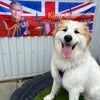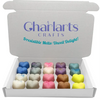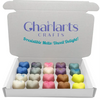The History of Scented Wax
I. Introduction
Gather 'round, fragrance aficionados! Today, we're embarking on a scented sojourn through time, a journey that'll carry us across millennia and continents, exploring the evocative world of fragranced wax. From the mystic rituals of ancient civilizations to today's DIY craft blogs, let's delve into the rich tapestry of history woven together by the threads of aromatic waxes.
II. The Dawn of Fragrance: Ancient Civilizations and Their Scents
A. Ancient Egypt
In the shadowy chambers of pyramids and on the sunlit banks of the Nile, Ancient Egyptians crafted and cherished their scented waxes. Frankincense and myrrh, fragrances still popular today, were believed to bridge the world of the living and the divine. Egyptians achieved their signature scents by steeping these precious materials in molten wax—a method as intriguing as the civilization itself.
B. Ancient Greece and Rome
Greek and Roman societies also fell under the spell of fragranced wax. Whether offered to Aphrodite or crafted for a luxurious Roman feast, scents like rose and myrtle infused their beeswax creations, each aroma a hymn to their deities and a feast for the senses. Their process? A delicate dance of heating and cooling wax, infusing it with meticulously crushed petals.C. Ancient China
Buddhist rituals in Ancient China were often accompanied by scented candles. Fragrances like sandalwood and jasmine played a vital role, their smoke curling upwards in intricate dances of devotion. The monks harnessed the inherent fragrances of these materials, combining them with wax in an artful balance of heat and patience.III. Illumination and Aroma: From Middle Ages to Victorian Era
A. Middle Ages
The Middle Ages introduced a blend of spirituality and practicality to the scented wax scene. Herbs like rosemary and spices like clove were steeped into wax to create divine aromas for religious ceremonies, and to add a pleasant fragrance to the wax seals of important documents. Medieval artisans coaxed the essence of these botanicals into wax through long, gentle simmering.B. Victorian Era
The Victorian era brought the art of scented wax into homes. To mask the unpleasant aroma of widely used tallow candles, fragrances like rose, violet, and vanilla began to be infused into wax. This era used a technique called enfleurage, where fragrant flower petals were pressed into fats to extract their scent, marking a breakthrough in the history of scented wax.IV. Democratising Aroma: 20th Century Innovations
A. Early 20th Century
The 20th century witnessed the democratization of fragranced candles as they went from luxury to commonplace. Scents of pine and lavender started filling homes, transforming the simple act of lighting a candle into a sensory experience. Modern technology allowed for steam distillation—a faster, more efficient way to extract fragrances, lending a helping hand to the booming candle industry.B. The Rise of Scented Candles and Wax Melts
The 80s and 90s witnessed the real "scent-sation". Brands like Yankee Candle and Scentsy started creating an olfactory palette that Picasso would envy. These trailblazers combined fragrances in ways previously unimagined, using distillation and chemical extraction processes to create a scented symphony that played out in homes across the globe.V. Embracing Nature and Craftsmanship: 21st Century Trends
A. The Shift to Natural Materials
The 21st century signalled a return to Mother Nature's lap, with materials like soy wax and beeswax making a comeback. Essential oils, from calming lavender to invigorating citrus, added natural fragrance to our wax favourites. Cold pressing and steam distillation have become the extraction methods du jour, ensuring the scents remain as pure and natural as their sources.B. DIY Culture and Home Fragrance
Nothing quite embodies the spirit of the 21st century like a thriving DIY culture. With the internet as our guide, we've taken to creating our very own aromatic experiences at home, using everything from cinnamon sticks to coffee beans to craft personalized scents. Whether it's using double boilers or slow cookers, the process has become as enjoyable as the fragrant outcome.
C. CharlartsCrafts: Pioneering Aromatic Craftsmanship in the Modern Era
2021 witnessed a new entrant in the arena of scented wax: CharlartsCrafts. Birthed from a passion for quality and a flair for creativity, this brand has been pioneering the industry with its unique blends and sustainable practices.
At CharlartsCrafts, the age-old art of scented wax takes on a modern twist. Utilizing techniques inherited from across the ages, this brand goes beyond just selling products. It creates an experience—sculpting stories and memories through the olfactory richness of its wax melts and candles.
Not one to be left behind in the move towards sustainability, CharlartsCrafts prides itself in using natural, eco-friendly materials. But their commitment doesn't stop there. CharlartsCrafts encapsulates the DIY ethos of the 21st century, not just in their crafting process, but also by empowering their customers with knowledge and appreciation for the art form.
Today, as we trace the scented path of wax products through history, it's brands like CharlartsCrafts that stand testament to the timeless allure and continual evolution of this craft.
VI. Conclusion
And there you have it—a journey through the ages, a fragrant saga written in wax. Our love for scented wax reveals more than just our noses' whims. It unveils a history of civilization, of spirituality, and of technological progress, all wrapped in the gentle flicker of a candle flame. So the next time you light a scented candle or melt a fragrant wax, remember, you're not just releasing an aroma, you're also igniting a piece of history.




